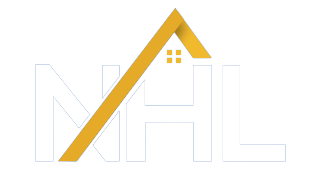
For many low-income families in Kenya, the idea of owning a home can feel like an unattainable dream. Rising real estate prices, inflation, and high mortgage interest rates often seem like insurmountable barriers. But there’s good news—homeownership is not just for the elite. With the right strategies, guidance, and access to affordable housing developments like Muthaiga Residency, even low- to middle-income earners can finally take the keys to their very own homes.
The Reality: Why Homeownership Feels Out of Reach
Many Kenyan families fall into the “missing middle”—those who earn too much to qualify for government-subsidized housing but not enough to afford conventional market-rate homes. Challenges include:
- Limited Access to Financing: Traditional banks often require high deposits or strict credit history checks.
- Lack of Awareness: Many are unaware of affordable housing options tailored for them.
- Inflated Urban Prices: Urban sprawl and speculation have driven up the cost of land and housing.
The Game Changer: Affordable Housing Projects
This is where real estate platforms like Naicom Homes come in—bridging the gap between aspiration and accessibility. One shining example is Muthaiga Residency, a modern, affordable development designed to serve budget-conscious Kenyans without sacrificing quality.

Personal Finance
on said
This is a really important issue that needs more attention. It’s frustrating to see so many families stuck in this “missing middle” situation, unable to access affordable housing. The government should consider revising the income thresholds to include more people who are struggling. I wonder if there are any initiatives or programs being developed to address this gap? It’s also worth exploring whether private developers could play a role in creating more affordable options. What do you think about the idea of public-private partnerships to solve this problem? How can we ensure that these families don’t fall through the cracks?
Kikma
on said
This is a really thought-provoking issue! The concept of the “missing middle” in Kenya highlights a significant gap in the housing market that affects so many families. It’s concerning how many people are stuck in this limbo—too well-off for subsidies but too poor to afford market-rate homes. I wonder what concrete steps the government or private sector could take to address this, maybe through innovative financing models or partnerships? Do you think there’s enough awareness about this issue among policymakers? It’s frustrating to see such a crucial problem being overlooked. Could there be more public-private collaborations to create affordable housing solutions? I’d love to hear your thoughts on how this could be tackled effectively!
Finance
on said
This is a really important issue that needs more attention. It’s frustrating to see so many families stuck in this “missing middle” situation, unable to access affordable housing. The government should consider revising the income thresholds to include more people who are struggling. I wonder if there are any community-driven initiatives that could help bridge this gap. It’s also worth exploring partnerships with private developers to create more affordable options. How do you think we can raise awareness about this issue to push for change? What’s your take on potential solutions?